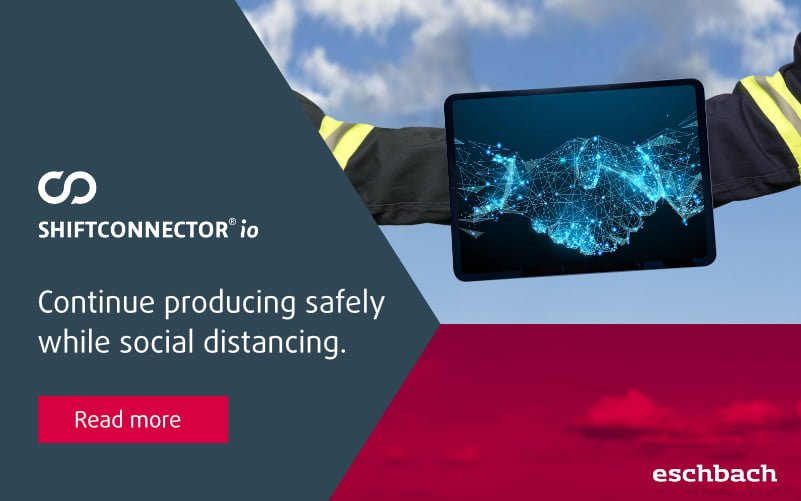Human Communication in the Digital Workspace
The effects of the global pandemic have been transformative on a scale and in a way not seen in most people’s lifetimes. Perhaps the most dramatic transformation is how quickly society, as a whole, has moved from engaging in close proximity to one another to being more distant; heavily relying on telephony and digitalization in an attempt to accomplish what used to be done face-to-face.
But it also has become obvious over time that there are shortcomings. The personal satisfaction of meeting our family and friends remotely lacks the intimacy of being together in person. Young students being taught their lessons remotely is not as rich a learning experience as is achieved learning in the classroom. And conducting business telephonically risks losing the details and context necessary to make decisions that are informed and sound.
In business in particular, automation and digitalization are penetrating deeper into our business activities and wider across our value-chains. Indeed, technology and machines monitor and control a great many more processes today than they did just a short time ago.
But technology and machines can’t sense the way humans do. Although capable of monitoring and acting based on algorithms; they can’t smell, taste, hear, see, or feel the same way people do. Realizing this, that context is important, is causing the pendulum to begin swinging back with the focus increasingly shifting to the involvement and contribution of the people involved.
So the challenge is; how do we contextualize the raw process data with the sensory input of people to create information (data with context)? And how do we make this information accessible and understandable for those who need it to make informed decisions today and into the future?
After all, we must learn from the past; not only the mistakes when things went wrong, but the benefits realized when things went right.

Simply stated, but less simply done, is to build a knowledge base of information and experience captured over time; a single point of truth which captures the data harvested by machines and technology and converted into information by being augmented with the human experience and insights.
In this manner, by avoiding the errors caused by gaps in the information and by enabling more complete and transparent communication in the manufacturing processes, people will be able to make better decisions in the present and into the future. In doing so, manufacturing operations will be more effective and efficient with increases in safety, reliability, and uptime.
But how can this be accomplished; acquire data and convert it into information?
The acquisition of data is fairly straight-forward. Interfaces to machines to collect the data abound, are nearly ubiquitous, and any gaps can be readily filled with the introduction of additional interfaces.
Converting the data into information by augmenting the data with the contextual knowledge and intelligence of people is more challenging. After all, we don’t live in “the Matrix”. We can’t simply plug ourselves into the mainframe and do downloads and uploads to gain and share wisdom.
But we can build a structure and systemize it as a single repository where people can accurately record their thoughts, observations, and experiences as well as events that might have occurred and the circumstances surrounding them; in essence, building a body-of-knowledge. This single point of truth, where everyone is feeding and working from the same data objects, will enable transparent communication and ensure that accurate and timely information is available where needed and when needed.
By connecting individuals and forming teams in such a manner and on one platform, we can reduce the effects of living in a virtual world and improve our living and working in the real world. And by having standardized and structured communication protocols with integrations to other mission-critical systems, we can have greater transparency for the prioritization of efforts and activities.
But where to start?
Many companies believe the only way they can get a solution that is “perfect” for them is to create it themselves. This is a mistake. First and foremost, and unless your company creates software and systems, trying to build an application internally is non-core to the business. As such, there is absolutely no chance of your ever completing the development and implementation of a system for less investment in time or treasure than purchasing a solution off the shelf that will satisfy almost all of your requirements; and satisfy them today and not some time in the distant future (if ever).
The best approach would be to make the investment and implement a solution like Shiftconnector. By implementing an off-the-shelf application, you will (at a minimum);
- Benefit from the best industry practices incorporated into the solution over time from the hundreds of previous implementations at peer-companies
- Compress the implementation time by months if not longer (or ever)
- Reduce the initial investment requirements to develop by a magnitude
- Reduce the on-going cost of ownership for support, updates, and enhancements
- Eliminate the risks associated with developer attrition or re-assignment
- Ensure that future industry best practices continue to be harvested and incorporated into the solution.
Further, the consultants who will help to configure and deploy the solution have years of experience in implementing the solutions; bringing with them the wisdom they have gained by being exposed to diverse situations and circumstances. Your company will benefit from this expertise in the robustness, simplicity, and stability of the implementation.
Of course, given the new operating parameters required today, these consulting and subsequent training activities would be delivered remotely in the form of sessions and workshops. And the project documentation for the hows and the whys of the system configuration and its use will be on-line and available on-demand; the entire history in one place.
What can be some of the expected benefits by improving the human communication in the digital workspace using Shiftconnector?
Increased safety: By capturing the activities as production occurs and creating a single source of truth of the historical record there will be a dramatic reduction in the omission of critical information from shift to shift and this will result in an increase in safety.
Increased reliability and uptime: Similar to safety, by being able to record the health and condition of the plant and machinery, production personnel will be better informed to make the critical decisions necessary to maximize production efficiencies and alert to conditions which might call for preventative maintenance.
Continuous improvement: By standardizing and capturing the activities on the production floor and the operation of the plant and equipment, a history will be created which can then support proposed improvements in the processes.
Optimized Processes: Further to supporting the continuous improvement efforts, an examination of the logs, when combined with operational information from the equipment, will illuminate opportunities for improvement which can be further evaluated and considered for action.
Enable next-generation plant process management: By combining operational data from the systems and the contextual data from people, the information will be able to support advancement in the maturity models of plant operation and the processes that support those operations.
Data is data. In its raw state, it is inert.
Only when contextualized by attaching human observations and experiences does data become information. And information begets wisdom which can be used to make better decisions faster.
Technology can be both a bridge and an obstacle at the same time. When it comes to human communication in the digital workspace, we need to be sure that the most valuable assets in our companies – our workforce – is protected from harm. And we also need to support and empower them to make decisions based on information; wise decisions. It’s in everyone’s best interest and something we can all align towards.
About the author
Andreas Eschbach is passionate about digitizing the chemical and pharmaceutical production worldwide. Focused on the success of production employees, plant managers and operational excellence enthusiasts.
Founder and CEO of a German-American company.
Eschbach provides software solutions for customers in the process industry world wide to improve their operational excellence.
Website: https://www.eschbach.com/en/







